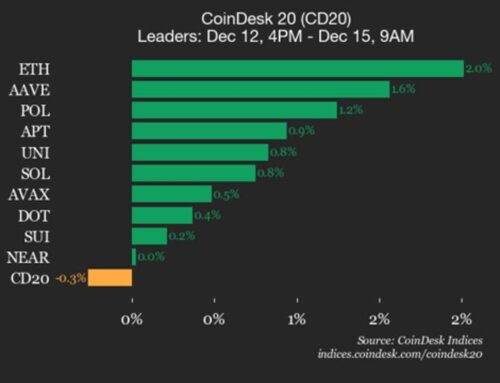3 Things Climate Therapists Want You to Know
June 23, 2025
If you nearly keeled over from extreme heat last summer or watched in shock as the California wildfires destroyed more than 16,000 structures in January, you know that climate change is already wreaking havoc. The United Nations calls the crisis “the single biggest health threat facing humanity.” Weather disasters, the spread of temperature-sensitive diseases like malaria, and carbon emissions from burning fossil fuels already sicken and kill many Americans each year. Meeting the climate goals set out in the 2016 multinational Paris Agreement would save about a million lives per year across the world by 2050, according to the U.N.—but Donald Trump pulled the U.S. out of that agreement the day he took office. With a new administration that has vowed to roll back even more climate-protection measures, many of us are anxious and scared. Will progress toward solving the climate crisis stall or even reverse, with devastating implications for our health?
While there’s certainly reason to worry, there’s also reason to remain cautiously hopeful. Yes, movement toward solutions will inevitably slow without continued federal support, but the momentum from smart moves we’re already making, along with future technological advances, makes progress inevitable if not sufficient. The big reason: money. “There are these unstoppable market forces whereby clean technology will only get better and cheaper over time,” says Gernot Wagner, Ph.D., a climate economist at Columbia Business School, who notes that returning to a fully coal- and fuel-based world not only is morally wrong but also no longer makes economic sense.
How Money Talks
There’s already a good deal of investment in climate progress in the U.S. thanks to three bills that passed in 2021 and 2022—the Bipartisan Infrastructure Law, the Inflation Reduction Act (IRA), and the CHIPS and Science Act. Each of these doled out federal grants, loans, tax credits, and other monies aimed at climate solutions. The IRA alone led to hundreds of billions of dollars of investments in clean energy and climate-friendlier manufacturing.
Investment has already jump-started green transformations on a local level, some of them specifically in economically distressed counties. These projects financially benefit regular people and local businesses in those areas in very noticeable ways. Throughout the country, “a lot of solar went up on municipal buildings, and grants helped people with things like replacing home insulation to make it more energy-efficient,” says Susannah Randolph, director of the Florida chapter of the Sierra Club. Actions like these reduce the need for the fossil fuels that have contributed to climate change.
Bigger companies—which got tax breaks for green investments—have also made major strides. For example, Florida Power & Light, the state’s major energy producer, shifted significantly away from coal and deployed millions of solar panels on several dozen solar farms. Renewable energy is so popular that some states, including Iowa and South Dakota, now produce more than half their energy from sources like wind, hydroelectric dams, and the sun, while other states get more than a third of their power this way. Oil-rich Texas has some of the highest growth in solar and wind of any state, according to the nonprofit Climate Central.
Then there are the giant investments auto companies have made in producing electric vehicles (EVs), which require half as much energy to run per mile as traditional vehicles and don’t produce tailpipe emissions. Six years ago, there were just six EV models to choose from; now there are close to 50. And people are buying them—spurred in part by the federal clean vehicle tax credit, 9% of all new vehicles sold in the U.S. now are EVs. While the new administration says it plans to end this tax credit, driving an EV is nonetheless easier than ever now that there are more than 200,000 public charging ports across the nation, with more being added weekly. Several huge U.S. factories that once churned out internal combustion cars have fully converted to production of EVs, an expensive process for the car manufacturers that won’t be reversed, says Anna Stefanopoulou, Ph.D., a professor of mechanical engineering at the University of Michigan.
What to Expect Next
With federal support being pulled back, experts expect some slowing of progress. Still, when it comes to climate solutions, Wagner says, “the fundamental trends all point in one and only one direction”—forward. Some of those trends:
Technology Will Advance
Recent technologies that make our climate healthier include cool roofs, made from materials that reflect rather than absorb sunlight; an insulating gel that makes windows more energy-efficient; and tastier plant-based “meats” (livestock accounts for 15% of the world’s greenhouse gas emissions). Some new tech is more affordable now as well. Induction stoves are one example, says Wagner: They heat food more precisely than gas stoves but are up to three times as energy-efficient (and don’t cause asthma and other respiratory problems). “Five years ago, an induction stove would have cost you $1,500. Now IKEA sells induction plates for $60,” Wagner adds.
Renewable Energy Will Cost You Less
The least expensive option for generating power in many communities is no longer fossil fuels but renewables, according to the International Renewable Energy Agency. “Solar panels were 100 times as expensive when Jimmy Carter put them on the White House as they are today,” Wagner says. This is thanks to economies of scale, improved manufacturing techniques, and lower labor costs as more workers gain experience. Reductions in tax credits or grants could slow further price declines but won’t reverse the trend. “Economics are very powerful and can win the day when it comes to clean energy,” Randolph says.
Solar Tech Will Save Power Companies Money
When energy is generated closer to where people need it, especially from rooftop solar, power companies don’t need as many expensive distribution lines, says Ben Delman, communications director for Solar United Neighbors, an education and advocacy group. Onshore and offshore wind power costs are falling as well, having dropped 56% and 48%, respectively, between 2010 and 2020. Texas landowners wanting to get rich might previously have drilled for oil on their property, but “in the new world, you put wind turbines and solar panels there,” Wagner says.
Batteries Will Have Even Greater Capacity
Renewable energy and EVs need strong batteries to store power for times when the sun doesn’t shine, the wind doesn’t blow, or you’re miles from a charging station. Battery costs have fallen a whopping 90% on average since 2010, according to the International Energy Agency, and batteries hold massively more wattage than five years ago. Meanwhile, car companies, which have greatly increased the distance their vehicles can go between charges, are working on boosting efficiency even further. At some point soon, charging an EV will be as easy as hitting a gas station.
More of Us Will “Get It”
Surveys by the Yale Program on Climate Change Communication have shown a 24% jump in Americans who believe climate change is happening—73% now agree. And two-thirds understand that prioritizing climate solutions is critical, per a recent survey by the Pew Research Center. This will create more political pressure, along with moves to keep up with the Joneses. “People are much more likely to go solar if they have a friend or neighbor who’s done it. A really great virtuous cycle is created,” Delman says.
The Pressure of Time
This is all encouraging—but nowhere near enough. Worldwide greenhouse gas emissions are projected to rise 3% between 2015 and 2030, according to a 2023 report published by the U.N. By 2030—five years from now!—emissions must fall by 28% to keep global warming below the 2°C (3.6°F) target that would prevent the most dangerous outcomes. If we go past that point, the world will experience longer and hotter heat waves, droughts that reduce food supplies, and more frequent and intense wildfires. To protect our climate from the worst outcomes, we must make an exponential leap. But while not every government recognizes the importance of taking giant steps toward a greener future (keep urging your elected representatives to do so!), even small steps will get us closer. In the meantime, the economics of more efficient energy should keep us moving in the right direction.
What Climate Therapists Want You to Know
If you’ve been feeling anxious, depressed, or angry, you’ve got company. More than half the adult respondents in a poll by the American Psychological Association reported being anxious about climate change, and Google searches for “climate anxiety” are at an all-time high. In response, a rapidly expanding field of “climate-aware” psychotherapy has developed in recent years, spawning organizations like the Climate Psychiatry Alliance and the Climate Psychology Alliance. We asked two experts in the field for their advice on coping with feelings of helplessness.
Talk it Out
Working with a climate-aware therapist (look for one at climatepsychiatry.org) can help you identify, validate, process, and channel complicated eco-related emotions. “Cognitive restructuring” may allow you to look at the problem in a different way, which can create hope rather than pessimism and distress, says Robert Feder, M.D., a psychiatrist on the steering committee for the Climate Psychiatry Alliance. For things to improve, Dr. Feder says, “it’s extremely important for people to have a hopeful outlook about the climate crisis.”
Do Something
The best remedy for anxiety is action. “The fear that you feel is something to be listened to and harnessed,” says Margaret Klein Salamon, Ph.D., author of Facing the Climate Emergency: How to Transform Yourself With Climate Truth. Participating in a protest march or joining a local advocacy organization can help you be part of the solution while cultivating resilience, agency, empowerment, and hope.
Find a Community
Processing complicated emotions with regard to the climate crisis shouldn’t be done in isolation. “The number one emotional experience people report to me about climate is alienation. They say, ‘I don’t have anyone to talk to about this,’ ” says Salamon. Seek out support groups designed to create connection around climate distress: Try the Good Grief Network or look for Climate Cafés, which are led by facilitators trained by the Climate Psychology Alliance.
Put Your $$ Where Your Values Are
Update appliances, cars, and other home items with climate-friendly options.
When your furnace breaks, look into replacing it with a greener heat pump. Need a new water heater? Tankless ones use up to 34% less energy than conventional varieties. Make your next car an EV.
Buy less.
Greenhouse gases are created in the production of every piece of clothing and household item. When you need something, consider pre-owned items from thrift shops or Facebook Marketplace.
Support companies that care.
The website GreenCitizen lists ones making genuine strides, including Patagonia, Seventh Generation, and Starbucks. And since many banks still invest a lot in fossil fuel, consider putting your money in the few that don’t, such as Climate First Bank, Randolph advises.
Search
RECENT PRESS RELEASES
Related Post



